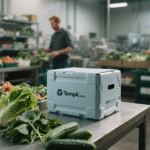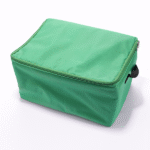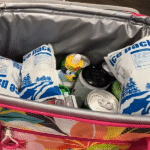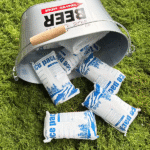You need dry ice packs for shipping nearby that pass carrier checks and keep products frozen. This guide shows where to buy, how many pounds to use, and how to label boxes so they clear counters on the first try. Updated August 14, 2025, it blends field data with the latest acceptance rules and quick tools you can use today.
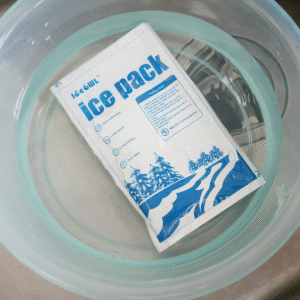
-
Find same‑day sources for dry ice packs for shipping nearby and what to ask before pickup.
-
Estimate pounds for 24–72 hours with a fast, test‑based method you can tune per lane.
-
Apply 2025 labeling (UN1845, Class 9, net kg) so air and ground shipments are accepted.
-
Pack like a pro: pellets around, slab on top, vent path taped in—not airtight.
-
Decide when PCM or gel packs beat dry ice packs for shipping nearby on cost or compliance.
How do you choose dry ice packs for shipping nearby?
Pick format by hold time, lane heat, and box geometry; pellets surround fast, slabs last longer. Start with hours to door and product shape, then balance contact area and sublimation rate. For ecommerce boxes, pellets fill gaps best; dense meats favor blocks or slabs for slower CO₂ release. Add a delay buffer when weekends or late tenders loom.
Think from your receiver’s view. Pellets pour around pints of ice cream; a thin slab on top slows loss. Ask local suppliers which pellet size they stock; 3 mm “rice” pellets fill tight voids but disappear faster than 10–16 mm pellets. If you fly, confirm packaging supports UN1845, Class 9, and net weight marking in kilograms.
Pellets vs. blocks: which format holds longer for variable lanes?
Pellets sublimate quickly and maximize contact; blocks and slabs release CO₂ slower and extend hold. Combine formats when lanes swing: pellets around the load, slab as a cold “lid.” This hybrid cuts melt claims without over‑spending on mass.
| Pack Format | Best For | Typical Duration | What It Means for You |
|---|---|---|---|
| 3 mm pellets | Small SKUs, tight voids | Short–Medium | Fast pull‑down; highest loss rate; great fit-up. |
| 10–16 mm pellets | Mixed loads | Medium | Balance between contact and longevity. |
| 5–10 lb blocks/slabs | Dense, large loads | Medium–Long | Fewer pieces; slower sublimation; simpler packing. |
Practical tips
-
Pellets first, slab last: surround product, then cap with a flat slab to slow loss.
-
Tape a vent path: never seal the liner airtight; CO₂ must escape per 49 CFR 173.217.
-
Use a liner bag: control “snow,” but keep at least one vent hole.
Real‑world case: A bakery cut melt complaints 42% by switching to pellets plus a 5 lb slab inside a 2″ EPS shipper.
How many pounds of dry ice packs for shipping nearby do you need?
Plan baseline loss, add lane heat and delay buffers, then round up to the nearest 5 lb. Typical ecommerce boxes need 5–20 lb for 24–48 h depending on insulation and payload mass. Add 25% for hot lanes and 20% if you tender after 3 pm or face weekend holds. Label net kg on the box.
Sublimation accelerates with headspace, warm payloads, thin walls, and hot hubs. Pre‑chill boxes, keep product centered, and place the slab on top because cold air sinks. Validate one live box per SKU mix before rollout; record start temp, dry ice weight, and delivery temp.
Quick estimator (24–72 h, rule‑of‑thumb)
| Transit Time | EPS 1.5″ (typical) | EPS 2″ (better) | Hot Lane Add‑On | Reality Check |
|---|---|---|---|---|
| 24 h | 8–12 lb | 6–10 lb | +2–4 lb | Start near 10 lb unless lab‑validated. |
| 48 h | 16–22 lb | 14–20 lb | +4–8 lb | Validate under ISTA 7E for longer holds. |
| 72 h | 26–34 lb | 24–32 lb | +6–10 lb | Long lanes need stronger insulation and QA. |
Example: Meal kits, 48 h, 2 gal payload, 1.5″ EPS → ~12 lb after buffers; ice cream, 24–36 h, 1.5 gal → ~10 lb.
Are you compliant in 2025 when using dry ice packs for shipping nearby?
Mark “Dry Ice” or “Carbon Dioxide, solid,” apply UN 1845 + Class 9, and show net dry ice weight in kilograms. Ground shipments still require venting and durable packaging per 49 CFR 173.217; air shipments follow IATA DGR 66th ed. with operator variations. FedEx does not require a DGD when dry ice is the only DG cooling a non‑DG payload; the airbill must include the UN 1845 line. USPS domestic air caps dry ice at 5 lb per piece.
Labels, documents, and venting—at a glance
| Mode | Allowed? | Core Requirements | What to Do |
|---|---|---|---|
| Air (IATA) | Yes | UN 1845, Class 9, net kg on package; operator limits | Vent packaging; include UN 1845 entries on the air waybill. |
| Ground (DOT) | Yes | Strong, vented packaging; 49 CFR 173.217 marking | Mark UN 1845 and net kg; keep vent path open. |
| USPS Domestic Air | Yes | ≤ 5 lb per mailpiece; vented container | Apply required markings; avoid international mail. |
Pack design rule: Tape seams but never seal the liner airtight; provide a small, intentional vent path.
Where can you buy dry ice packs for shipping nearby today?
Call three supplier types: supermarkets for blocks, industrial gas distributors for pellets, and packaging wholesalers for slabs and kits. Ask about pellet size, minimums, cutoff times, weekend hours, and whether they can print UN 1845 labels. Reserve stock and bring a cooler for the drive.
| Local Source | Typical Stock | Lead Time | What It Means for You |
|---|---|---|---|
| Grocery chains | 1 lb cuts, 10–15 lb blocks | Walk‑in | Fast pickup on ship day. |
| Industrial gas (Airgas/Linde, etc.) | Pellets, blocks | Same‑day with call‑ahead | Best pellet availability for tight voids. |
| Packaging distributors | Slabs, shippers, labels | Same/next day | One‑stop for boxes and compliance kits. |
Three‑step “nearby” script: Search your city + “CO₂ supplier,” call to confirm pellet size and cutoff, reserve 30 lb pellets + two slabs under your name.
When should you choose PCM or gel packs instead of dry ice packs for shipping nearby?
Use −21 °C PCM when you need frozen performance without DG handling; use gel packs for 0–4 °C goods that must not freeze. A hybrid (PCM plus a small slab of dry ice) stabilizes temps while cutting dry ice mass.
| Option | Maintains | Pros | Cons | Best Use |
|---|---|---|---|---|
| Dry ice (UN 1845) | Deep‑frozen | Very cold; long holds | DG rules; burns; ventilation | Ice cream, dense meats, multiday routes. |
| Gel packs | 0–4 °C | Simple; non‑DG | Won’t keep frozen | Fresh food that must not freeze. |
| −21 °C PCM | Frozen zone | Reusable; non‑DG | Heavier per hour | Frozen biologics or premium foods on DG‑sensitive networks. |
2025 developments and trends in dry ice packs for shipping nearby
Airlines and handlers are tightening acceptance checks, including pre‑booking confirmation of net dry ice weight and more operator variations. On the ground, weekend pellet availability is expanding, while shippers standardize pre‑printed UN 1845 kits and reserve local supply to reduce counter delays.
Latest progress at a glance
-
Operator checks: Some carriers validate dry ice mass before uplift; have kg and package count ready.
-
Carrier aids: 2025 checklists clarify label size and PI 954 references, reducing rejections.
-
Retail access: More weekend pellet windows support urgent fills nearby.
Market insight: e‑grocery and meal kit volumes broaden summer peaks. Shippers that validate packouts, standardize labels, and lock in local pellet reservations report fewer delays and lower spoilage.
Frequently Asked Questions
How much dry ice for 48 hours with a mid‑size shipper?
Start near 20 lb and adjust for route heat and insulation; carriers often plan 5–10 lb per 24 h. Validate before scale‑up.
Do I need a Shipper’s Declaration if dry ice is the only DG?
Not with FedEx when cooling non‑DG goods; include proper UN 1845 entries on the air waybill.
Can I mail dry ice with USPS?
Yes, domestic air up to 5 lb per piece, with vented packaging and required markings; international is prohibited.
What are the most common compliance mistakes?
Sealing boxes airtight, skipping net kg marking, and barehand handling. Provide a vent, mark weight, wear insulated gloves.
When should I skip dry ice?
Use PCM for −21 °C lanes or gel packs for 0–4 °C targets where freezing would harm quality.
Summary & Recommendations
Choose pellets, blocks, or a hybrid based on hold time and load geometry. Estimate pounds with ambient and delay buffers, then label UN 1845 + net kg on one panel with the Class 9 diamond. Source dry ice packs for shipping nearby from gas distributors or packaging houses and reserve ahead. Validate longer routes under ISTA 7E before peak season.
Next steps:
-
Test one box per SKU mix and log temps. 2) Pre‑print UN 1845 kits and net‑weight tables per box size. 3) Set weekly reservations with two local suppliers. 4) Train staff on 2025 checklists and operator variations.
Engagement tools
Two‑minute chooser:
-
Hours to door? 24 / 36 / 48 / 72+
-
Lane heat? Cool / Warm / Hot & Humid
-
Box size? ≤10 L / 11–20 L / 20+ L
-
Product? Ice cream / Meat & seafood / Biologics / Other
-
Mode? Ground / Air Domestic / Air Intl
Result (rule‑of‑thumb): Small + 24 h + cool → 5 lb pellets; Medium + 48 h + warm → 10–12 lb pellets + 1 slab; Large + 72 h + hot/humid → 15–20 lb mix.
Self‑check to cut bounce and returns:
-
I can buy dry ice packs for shipping nearby within two hours of packout.
-
My box vents CO₂ and is marked UN 1845 + net kg.
-
I planned 10 lb/24 h and added mass for hot routes.
-
I validated 48–72 h packouts under ISTA 7E.
About Tempk
We build practical packouts for real lanes, supply pre‑printed UN 1845 label kits, and maintain a vetted supplier network for dry ice packs for shipping nearby. Our strengths are fast sizing support and compliance workflows tuned to 2025 airline and ground requirements—so your team ships confidently, day one.

















